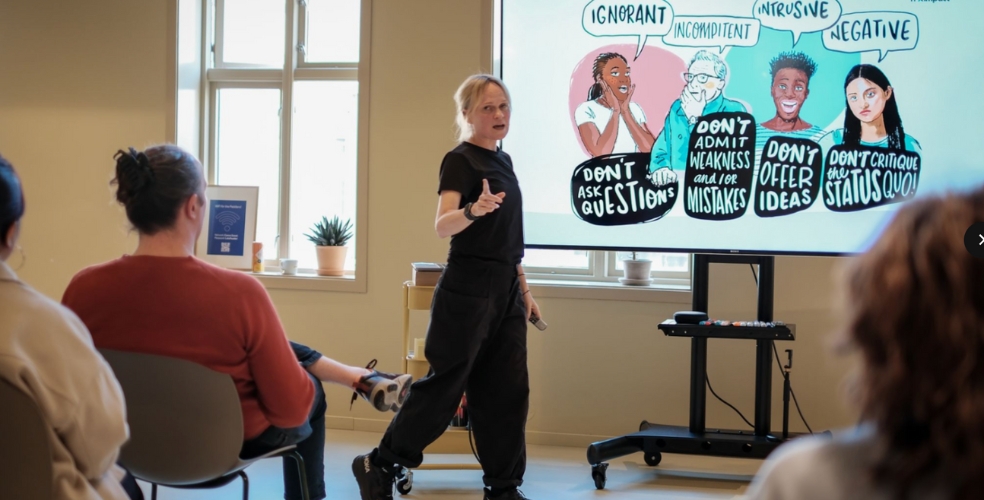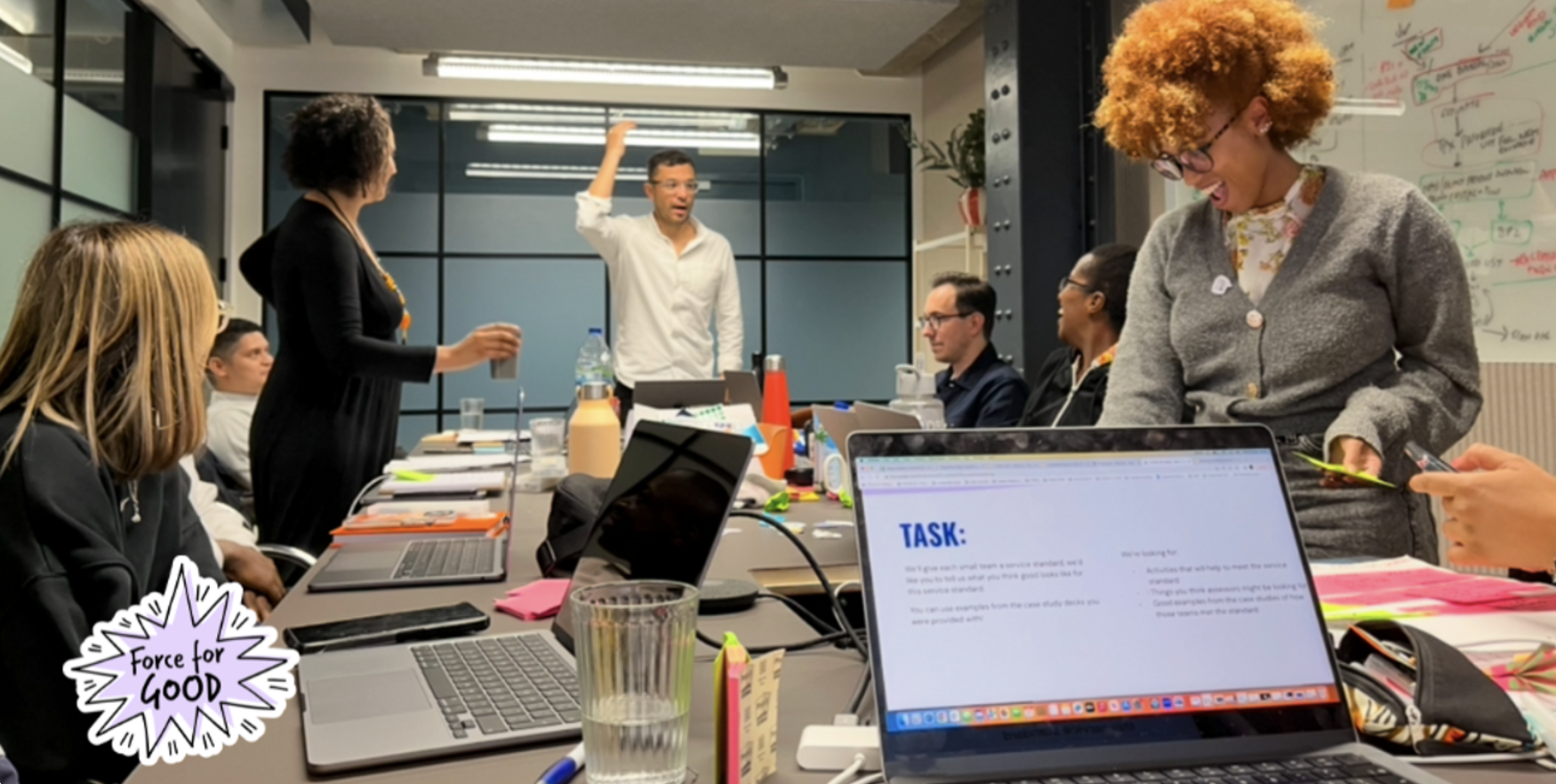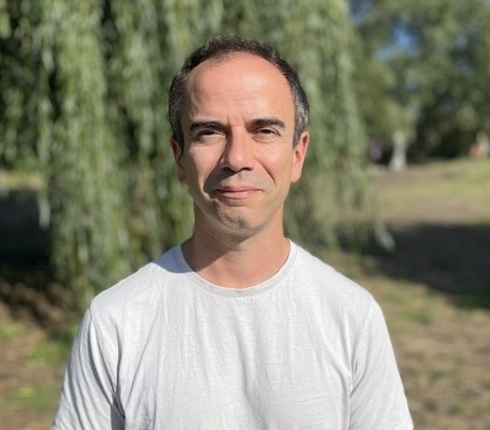I’m getting on. My CV now spans decades. I remember when Adobe Photoshop CS3 was the design tool and when people thought homepage carousels were a good idea.
And in that time, I’ve had plenty of ways of working and thinking thrown at me: agile, mental models, the customer journey, inverted pyramids. It goes on.
Often the first time I’d hear a new term would be when I started a new job. They’d be uttered with the assumption that everyone else was familiar with it.
This summer I learnt a new one: alpha.
Oh, yeah, looks like you’re on an alpha
In June, I started my first project at TPXimpact, looking at ways to make it easier for local planning authorities to assess sites for development. I was the content designer on the project. And it was an alpha.
I’m going to say right away that everyone on the design team was incredibly helpful and took their time to explain the purpose of an alpha. But that didn’t stop me from being a bit anxious.
Before TPXimpact, I’d spent half a decade working in fintech. Discover, define, develop and deliver – the much touted ‘double-diamond model’ – was how we were supposed to work. (Although in my experience it is seldom double-diamonded).
I read up on what the alpha phase of a project is – it follows the delivery methods in the GOV.UK Service Manual. This starts by explaining that:
"Alpha is where you try out different solutions to the problems you learnt about during discovery. Spend alpha building prototypes and testing different ideas"
There’s also talk of ‘risky assumptions’ and at the end of an alpha there might be an assessment.
First thought: Is that like an MOT?
Second thought: What happens if I fail? Would I be kicked out of design land?
What we did in the alpha
An alpha comes after the discovery phase of the project (learning about the problem) and before beta (the first version of a service). Our alpha lasted around eight weeks and in that time we tested our assumptions from discovery to see if the service could work.
I worked alongside an ace interaction designer, design researcher and design lead. We worked closely with the product owners from the department, software development and technology colleagues, and subject matter experts.
In total we created five prototypes, which we iterated on through two rounds of user research. Then there was a final sprint where we pulled everything together into a report with our recommendations.
What I learnt in my first alpha
It doesn’t have to be perfect
We’ve all heard the phrase ‘perfection is the enemy of the good’. That’s something any content designer – or anyone else for that matter – could bear in mind on an alpha.
At the start, I thought that the content I created would have to be good enough to go live. That’s not what was needed.
We weren’t creating content or prototypes that would go on to be built exactly as they were designed. We were creating things to show research participants. These would either validate or invalidate our assumptions.
The prototypes just had to be good enough to convey the idea of a service to the research participant. To tell the story of the service. Once I realised this – mainly from talking to others on the team – I felt able to let go of what I thought I should or shouldn’t produce.
You don’t have to prototype the whole thing
I hadn’t realised I’d been conditioned to think that a prototype was a series of pixel perfect screens linked together in Figma or something coded.
Seemingly I had forgotten that they could be paper-based, hand-drawn storyboards of how someone uses a service. It also doesn’t have to show every screen or variation. The alpha reminded me of this.
We showed research participants a high-level journey of a local planning officer using a new service to assess sites. This was created in Mural, an online whiteboard tool. It allowed the planners we chatted with to reflect on the service as a whole. In subsequent testing we created screens for sections of this service we wanted to understand more about, rather than waste time prototyping everything single thing.
Being a content designer is about being a designer
As a content designer I created guidance that would explain how the prototyped service would work. But I also pitched in with other design work – from running research sessions to creating the prototypes themselves.
Content designers shouldn’t be afraid to visually communicate their work. If you can create a rough wireframe in something like Figma, or even on paper, then go for it.
Conversely, you don’t always have to produce screens or copy to test. Liberty, our Head of Content Design, shared with me how she had focused on testing information architecture in a separate alpha. In this case, sweating the details of the design for this content made sense to come after they understood the content structures.
A final report is not a box ticking exercise
One important output from an alpha is the final report, or recommendations for what happens next. This summarises all the work that has gone into testing the assumptions. More importantly it helps the client understand whether the service should move forward to beta and any recommendations for the work.
We spent time thinking about our recommendations, ensuring that they were practical and grounded in the research. I used my content design skills here – working with the other designers to make sure our recommendations were clearly written, well presented and easy to understand.
We were helping the department understand whether a proposed service was worth investing time, money and energy in. Not actually creating the service itself.
There and back again
I recently finished reading The Hobbit to my young son. Bilbo Baggins is recruited by wizard Gandalf to reclaim top dwarf Thorin Oakenshield’s gold.
Bilbo is unsure whether he is up to the job. But over the course of the book Bilbo’s adventurous side wins out against his more cautious side – the side that longs for a comfy bed and second breakfasts. Bilbo ends up doing things out of his comfort area, learning new things.
Sometimes during the alpha I felt a bit like Bilbo – stuck between what I knew and wanting to learn. At the end of it I felt much more confident exploring different ideas to help the client decide on whether to go ahead with the service.
Our recent design blog posts
Transformation is for everyone. We love sharing our thoughts, approaches, learning and research all gained from the work we do.
-

Our time at Canoe Norway
Read blog post -

Transformation from the inside out
Read blog post -

The dimensions of fidelity in prototyping
Read blog post -

What we learned from running our Design Academy
Read blog post

